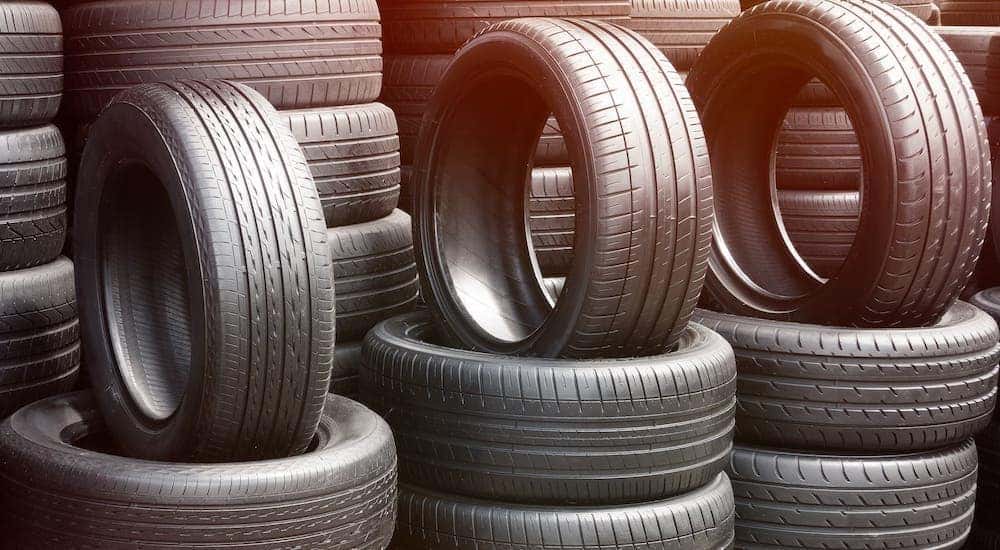Discover the very best Tires Morris IL: Considerable Selection Available
Discover the very best Tires Morris IL: Considerable Selection Available
Blog Article
Tire Service: Comprehending Tire Stress Tracking Systems
Recognizing Tire Stress Monitoring Systems (TPMS) is an essential element of keeping ideal automobile performance and security on the road. With developments in vehicle modern technology, TPMS has actually come to be a conventional attribute in modern lorries, offering real-time info on tire stress degrees.

Relevance of TPMS
The significance of Tire Pressure Surveillance Equipments (TPMS) depends on their capacity to boost car safety and security and performance through real-time surveillance of tire stress degrees. Preserving the correct tire pressure is essential for ensuring ideal handling, braking, and general safety and security of a lorry. TPMS gives drivers with immediate feedback on any overinflated or underinflated tires, permitting prompt adjustments to be made.
Components of TPMS
Consisting of numerous crucial elements, a Tire Stress Surveillance System (TPMS) works as an innovative security attribute in contemporary vehicles. The main components of a TPMS consist of sensing units, a control module, and a caution indicator. Sensors are generally located in the tire shutoff stem or affixed to the wheel assembly, where they measure tire pressure and transmit information to the control module. The control component processes this details and triggers a caution if it finds significantly reduced stress in any one of the tires. The caution indication, commonly an icon on the control panel, notifies the chauffeur to inspect the damaged tire or tires. Some progressed TPMS versions likewise present the actual tire stress readings for every tire, offering motorists with real-time information to guarantee ideal tire performance and security. By keeping track of tire pressure continually, TPMS assists avoid accidents, reduces tire wear, and boosts gas performance, making it a critical element for automobile safety and efficiency.
Kinds of TPMS

On the various other hand, indirect TPMS counts on the car's wheel rate sensing units to keep track of tire pressure. This system finds underinflation by comparing the rotational speeds of the wheels. Indirect TPMS is much less costly than straight TPMS, as it uses existing sensors within the vehicle.
While direct TPMS uses a lot more accurate analyses, indirect TPMS is simpler in style and generally needs much less upkeep. Both systems have their constraints and benefits, and the selection in between them usually depends on variables such as price, lorry make, and individual choice. Understanding the differences between these 2 types of TPMS can help vehicle proprietors make educated decisions relating to tire upkeep and safety and security.
TPMS Maintenance Tips
Efficient maintenance of TPMS is vital for guaranteeing optimum performance and safety and security of your vehicle. On a regular basis evaluating the TPMS sensing units for any damages or deterioration is critical. Make sure that the sensors are tidy and free from particles that might disrupt their performance. In addition, it is recommended to examine the sensor batteries regularly and change them as required to assure precise analyses. Conduct routine examine the tire stress degrees and compare them with the TPMS readings to ensure they are constant. Alter the system complying with the manufacturer's guidelines if there are any discrepancies. During tire rotation or replacement, make certain that the TPMS components are handled meticulously to stop any kind of prospective damages. Finally, if the TPMS anonymous warning light brightens on the control panel, attend to the concern promptly by checking the tire pressures and the general system for any kind of faults. By sticking to these maintenance ideas, you can lengthen the life expectancy find more of your TPMS and boost the security of your driving experience.
Benefits of Correct Tire Stress
Preserving correct tire stress, as highlighted in TPMS Maintenance Tips, is important for gaining the many benefits related to optimal tire stress degrees. One of the key benefits of keeping the appropriate tire stress is improved fuel performance. When tires are correctly blown up, there is less moving resistance, leading to much better fuel economic climate. In addition, proper tire stress makes certain also tire wear, extending the life-span of the tires and promoting safer driving conditions. With the appropriate tire stress, vehicles likewise have better handling and grip, particularly in adverse climate condition. This can improve overall driving efficiency and security for the chauffeur and passengers. In addition, preserving optimal tire stress can add to a smoother and a lot more comfortable trip by minimizing resonances and sound brought on by underinflated tires. To conclude, the benefits of correct tire stress exceed just tire durability; they include improved fuel effectiveness, blog improved safety, better vehicle performance, and overall driving comfort.
Final Thought
In final thought, understanding tire pressure tracking systems (TPMS) is essential for maintaining optimal tire pressure and making certain automobile safety. By recognizing the relevance of TPMS, knowing with its elements, understanding the different kinds available, adhering to correct maintenance pointers, and recognizing the advantages of maintaining appropriate tire pressure, drivers can boost their driving experience and extend the life expectancy of their tires. Correct tire pressure is key to efficient and secure lorry procedure.

Report this page